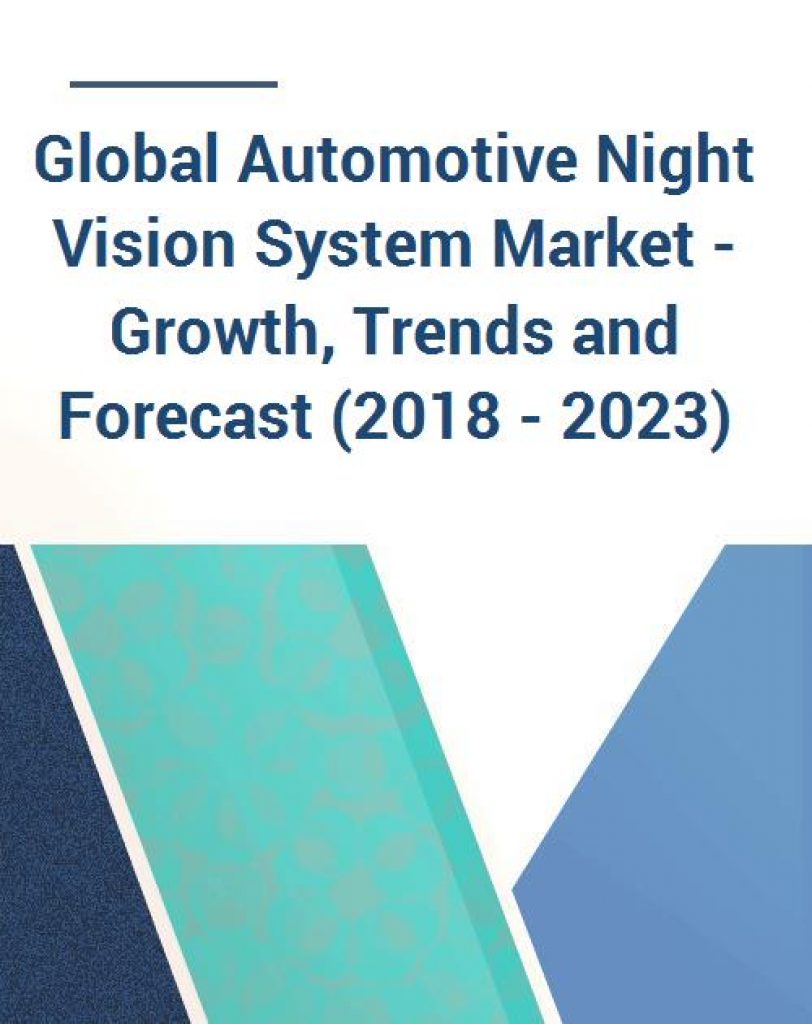The automotive night vision system market is expecting a CAGR of more than 15% in the forecasted period of 2018-2023. Globally, this market is bound to grow as it’s still in the nascent stage. Autoliv, Bendix Commercial Vehicles Systems, Denso Corporation, Robert Bosch GmbH and others are the key vendors of this automotive technology.
Automobile safety is one of the major concerns around the world today, so companies like Bosch, Autoliv, Denso and Bendix Commercial Vehicles Systems are building these technologies, which enable vehicle occupants to have a safe ride during night time. With the technology still currently limited to the luxury car segment, it is bound to grow in both consumer and commercial vehicles, making it a large future market. The researchers at the Mordor Intelligence estimate the CAGR of more than 15% in the period from 2018 to 2023.
Vehicle accidents/fatalities are one of the biggest reasons for loss of life all over the world, and a major chunk of these accidents take place during nighttime. Cars meet with road accidents every year, mainly due to poor lighting conditions and/or road infrastructure. To combat these issues, OEMs have been equipping high-end passenger vehicles with night vision systems and other driver assistance monitoring systems, e.g. Global Positioning System (GPS).
Automotive night vision systems improve the driver’s perception of low light and poor weather conditions. These systems also enable the driver to view the path ahead, which may beyond the reach of the vehicle’s headlights. As a result, a lot of fatalities can be prevented with this technology upgrade.
The Growing Industry
Night Vision Systems (NVSs) are for now available only in luxury cars; they are expected to expand to mass mid-car segments by the end of 2023. The high price trend in NVSs currently limits the market reach of the technologies used in such systems; sensors and the display unit are both costly, for example.
However, as the world moves towards driverless vehicles by the end of the forecasted period of 2023, a lot of automobiles are anticipated to have advanced NVSs. Vehicle manufacturers are progressively developing autonomous vehicles, which partly or fully eliminate any driver assistance in driving. These vehicles require a complicated integration of technology and connectivity wherein machine vision plays a significant role in determining the effectiveness of the autonomous driving system.
Therefore, automotive night vision systems play an integral role in determining the effectiveness of machine vision in driverless cars, especially during nighttime. Moreover, the thermal sensors used in night vision systems can also be engaged in the daytime to verify and increase the accuracy of machine vision.
The global automotive night vision systems market can be segmented into two main technologies on which night vision systems operate: Far Infrared (FIR) and Near Infrared (NIR). FIR detects the radiation emitted by the objects. On the other hand, NIR detects the illuminations which are reflected by the objects and are beyond the visible range of humans. FIR is generally more acceptable than NIR, since the detection distance of FIR is more than that of NIR.
Development of 3D-assisted automotive night vision system is the next move anticipated by the users. Vehicle manufacturers have been developing active night vision systems that have increased effectiveness and accuracy in gauging the distance between vehicles, vehicle locations, distance from obstacles, and road conditions. The subsequent development of autonomous vehicles is anticipated to benefit night vision systems by 2023.
Among the geographies, this market is currently dominated by Europe, followed by North America and Asia-Pacific. Factors such as the increasing demand for premium and luxury cars, coupled with the government regulations for vehicular safety systems, an increase in automotive technological awareness, and high GDP growth rates leading to higher disposable income, are all driving the growth of the European night vision systems market. With the rise of income in the APAC region, people are increasingly able to afford high-end vehicles, which have built-in technologies such as night vision systems; consumers are ready to spend more money in order to safeguard their and their family's security.
Low-cost developments of night vision systems for the economy-segment vehicle are poised to be the primary source of revenue generation for the manufacturers in the future, as the largest percentage of vehicles are sold in this segment.
For the full version of this report, please visit the Research and Markets website.


